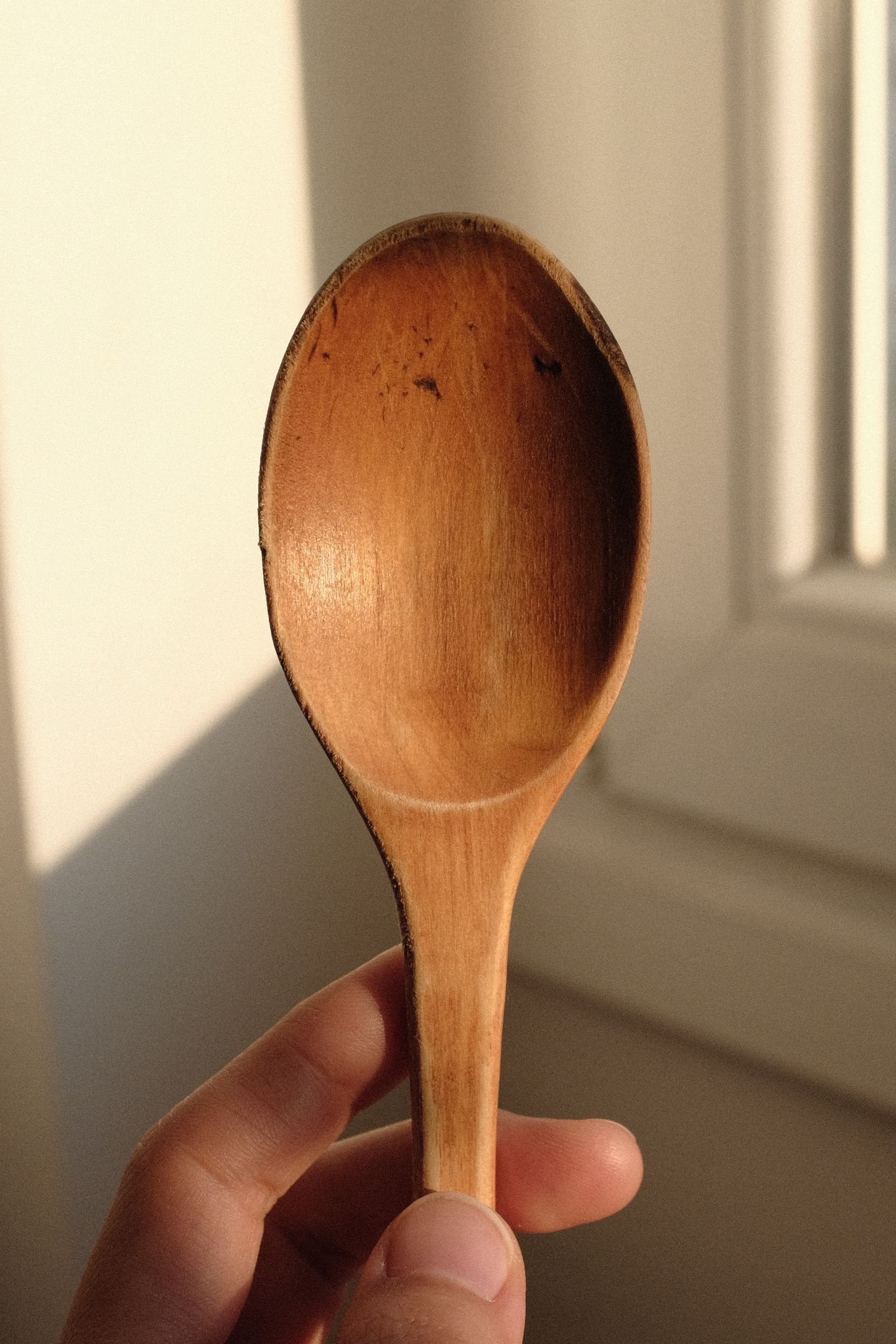I can cook with any tools, but I feel like I'm doing my own cooking when I use my tools.
I have a wooden spoon beside the gas range. The tip of the spoon is worn out and partially scorched. It's a cheap one that anyone might've had at home. Even if someone offers me a high-quality shiny spoon, I wouldn't feel comfortable with this old one. I've got used to it as I've cooked so many dishes with it. The old wooden spoon and other old and familiar tools show their presence in my kitchen. Those tools make the kitchen familiar and make me comfortable when cooking.
I don't have an electric rice cooker. I don't like keeping leftover rice. So I didn't even think of buying one. I also considered a pressure cooker or a Gamasot (traditional Korean cauldron), but I've chosen the clay rice pots. Since then, I've never thought of other rice pots. So I guess I'm content with the choice.
It has double lids, which prevents boiling over. The small pot is thinner than the big one, which cooks the rice not too dry, not too sloppy. The big one is thicker and cooks the rice pleasantly glutinous. It's big and deep enough to be used when braising or simmering. Both are Japanese, and I bought them when I was in Korea.
In Korea, we often eat something very hot, temperature-wise. After cooking in Ttukbaegi, we often serve the whole Ttukbaegi on the meal table to keep the warmness for a long time. You can see Jjigae, Guk, or Tang like boiling lava in Ttukbaegi. Even if it's not stew-like food, we often eat Bibimbap or something moist in the warm Ttukbaegi. You can see it in every Korean home and every Korean restaurant. You can especially see it a lot in Gukbab restaurants. Gukbab means soup(Guk) + rice(bab). The rice is inside the soup in a Ttukbaegi. When you go to such a place, you will see one Ttukbaegi per person. They eat hot rice in hot soup after blowing once or twice sloppily. They have such a painful expression on their face, all sweating. You cannot tell the sound they make is a sigh, a groan, or whatever.
Living abroad, I missed Ttukbaegi. When I lived in Singapore, I found this in Muji. It's big enough to cook Jjigae (stew) for 2~3 servings. It's thick and solid. I serve the Ttukbaegi, and the stew still boils even it's out of the heat. It brings a warm atmosphere to the meal table. We usually have small bowls where we can put a little bit of the Jjigae into. That way, we can enjoy the hot Jjigae until the end of the meal.
It's used when baking bread, braising, boiling broth, steaming rice cake, etc. I like the size, and it's easy to maintain. It's a French product.
I use it to grill vegetables, bread, or Tteok (rice cake). I mostly have bread for breakfast, so it's used almost every day. It's a Japanese product that I bought in Korea.
I use them when I need something denser than a colander. It's useful when I make cinnamon punch, juice, filter broth, etc. I put the cotton cloth on top of a colander and pour meat broth or anchovy broth over it to get the clearer broth. It's Korean, and I bought it in Korea.
I use them when I dry vegetables and grains or drain water from them. I put on the bamboo strainer the onion peels and the roots of spring onion after trimming them. They're later used for broth. I dry seasonal vegetables and later cook them. I also use them when I need to make rice flour. When the weather is good, it's used a lot. The dense one is Korean, and I bought the other one at a Vietnamese store in Singapore.
I like the rough and warm texture. I have stainless steel utensils but mostly use wooden ones. I feel comfortable when I use them on the pots and when I bring them to my mouth. I bought the wooden utensils mostly in Korea from a traditional Korean lacquerware workshop.
In Korea, we consume garlic a lot. According to research, a Korean person consumes six times as much garlic as an Italian person consumes. It'd be best to peel garlic whenever I need it, but it's too annoying because I need it too often. So I mince them and store them in the freezer. I used to mince them with a knife but found a processor of a good size in France. It's also useful for nuts, dried seafood, etc. It's a French product.
I use it when making Jeon (Korean pancake) or slice radish. It's useful, especially when making kimchi. It consists of a grater, a coarse julienne slicer, a find julienne slicer, and a mandoline slicer. It's a Japanese product that I bought in Korea.
